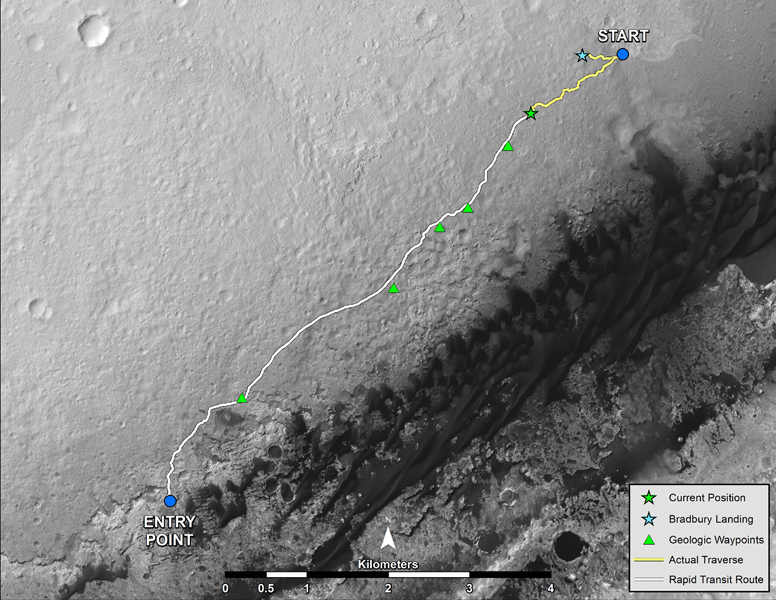
Above is a composite image of the Sculptor galaxy, combining observations from NuSTAR and the European Southern Observatory in Chile. Image Credit: NASA/JPL-Caltech/JHU
The images, taken from July to August 2012, shortly after the spacecraft launched, comprise an assortment of extreme objects, including black holes near and far. The more distant black holes are some of the most luminous objects in the universe, radiating X-rays as they ferociously consume surrounding gas. One type of black hole in the new batch of data is a blazar—an active, supermassive black hole—that is pointing a jet toward Earth. Also in the mix are X-ray binaries—pairs of black holes in which one partner feeds off the other—as well as the remnants of supernovas.
The data set only contains complete observations. Data will be released at a later date for those targets still being observed. Astronomers can use the data to better understand the capabilities of NuSTAR and design their future observing proposals. The first opportunity will be this fall, for joint observations with XMM-Newton.
The European Space Agency's XMM-Newton X-ray telescope, like NASA's Chandra X-ray Observatory, complements NuSTAR. While XMM-Newton and Chandra see lower-energy X-ray light, NuSTAR is the first telescope capable of focusing high-energy X-ray light, allowing for more detailed images than were possible before.

Above is an image of supernova remnant Cassiopeia A, located 11,000 light-years away, was taken by NuSTAR. Blue indicates the highest energy X-ray light. Red and green show the lower end of NuSTAR's energy range, which overlaps the capabilities of NASA's high-resolution Chandra X-ray Observatory. Image Credit: NASA/JPL-Caltech/DSS
Astronomers can compare data sets from different missions using HEASARC, which gives them a broader understanding of an object of interest. NuSTAR's high-energy observations help scientists bridge a gap that existed previously in X-ray astronomy, and will lead to new revelations about the bizarre and energetic side of our universe.
Other NASA missions with data available via HEASARC include Chandra, Fermi, Swift, Cosmic Background Explorer (COBE), Wilkinson Microwave Anisotropy Probe (WMAP) and many more.
The HEASARC is a service of the Astrophysics Science Division at NASA's Goddard Space Flight Center in Greenbelt, Maryland, and the High Energy Astrophysics Division of the Smithsonian Astrophysics Observatory in Cambridge, Mass. HEASARC holdings include data obtained by NASA's high-energy astronomy missions observing in the extreme-ultraviolet, X-ray, and gamma-ray bands, as well as data from missions, balloons and ground-based facilities that have studied the relic cosmic microwave background. HEASARC is online at http://heasarc.gsfc.nasa.gov .
Above is an artist's concept of the fully-deployed NuSTAR in Earth orbit. The section the foreground and to the top, contains the two round "lenses" for the observatory. The light they receive is focused on the receiving points in the rear section, located 10 meters away. Image Credit: NASA/JPL-Caltech/JHU
Launched June 13, 2012 aboard an Orbital Sciences Pegasus XL rocket, NuSTAR is a Small Explorer mission led by Caltech and managed by NASA's Jet Propulsion Laboratory, Pasadena, California, for NASA's Science Mission Directorate in Washington. The spacecraft was built by Orbital Sciences Corporation, Dulles, Virginia. Its instrument was built by a consortium including Caltech; JPL; the University of California, Berkeley; Columbia University, New York; NASA's Goddard Space Flight Center, Greenbelt, Md.; the Danish Technical University in Denmark; Lawrence Livermore National Laboratory, Livermore, Calif.; ATK Aerospace Systems, Goleta, California, and with support from the Italian Space Agency (ASI) Science Data Center.
NuSTAR's mission operations center is at UC Berkeley, with ASI providing its equatorial ground station located at Malindi, Kenya. The mission's outreach program is based at Sonoma State University, Rohnert Park, California NASA's Explorer Program is managed by Goddard. JPL is managed by Caltech for NASA.
Click here to visit NASA's NuSTAR page.
Click here to visit Caltech's NuSTAR mission website.
-
















